Easter in Spain
A brew of paganism and Catholic theology, with a dash of Muharram, a pinch of Ganesh Chaturthi and echoes of the Ku Klux Clan
Dear Global Jigsaw,
A pause this week from the ongoing Mao Keji interview on India-China relations to focus on Spain’s Easter—my favorite time of year. While in many parts of the world it may be a festival associated with bunnies and chocolate covered eggs, in Spain, Semana Santa, or Holy Week, as the seven days between Palm Sunday and Easter Sunday are referred to, is something more elemental all together.
Candlelit processions wind through medieval streets: hooded penitents haul towering wooden idols, drumbeats echoing like a heartbeat. Under the overt Catholicism are glimpses of Islam, paganism, even Hinduism—reflections of Spain’s layered cultural DNA. Arabic, Hebrew, and Gypsy influences surface briefly, veiled by centuries of Catholic ritual and modernity, yet revealed in Holy Week’s fervor.
Two years ago, we happened to be in Zafra during the celebrations, a little-known town in the southwestern province of Badajoz. It is fairly typical for the region – dominated by a 15th century fortress and complete with church, town square and a network of narrow streets lined with high-walled homes.
A few candles already lit the gloaming as we shuffled through the crowds to get as close to the entrance of the church as possible. Ghostly figures shrouded in white robes, red capes and pointed hoods with slits only for the eyes, came streaming out of the doors.
Semana Santa procession in Zafra. Credit: Pallavi Aiyar
It was a shocking sight at first, the clothing being so reminiscent of the white-supremacist Ku Klux Clan. However, these robes predate the Clan by centuries. The conical head gear known as a capirote were first prescribed in Spain by the holy office of the Inquisition. Men and women arrested on suspicion of heresy had to wear a paper capirote in public as a mark of humiliation.
Semana Santa procession in Zafra. Credit: Pallavi Aiyar
In time, the hood was adopted by the cofradia, or Catholic brotherhoods, so that their members could remain anonymous when they took to the streets to whip themselves bloody, in penance for their sins, in a very Muharram-like display of religious fervour. Although self-flagellation as a part of religious processions was eventually banned in 1777, in practice it continued till well into the 20th century.
The penitents, or nazarenos, in Zafra were thankfully whip-free, but many walked barefoot despite the spring-chill. Others carried wooden crosses on their shoulders. Suffering remained a conspicuous motif of the procession.
Directly behind the first contingent of penitents, the paso, or float, emerged from the church to wild cheers from the onlookers. It was an enormous structure, with a life-sized idol of Jesus Christ on the cross, his face frozen in grief. Every Spanish town has its own paso, which range from the simple to the highly ornate. Most weigh a ton or two.
Celebration of Semana Santa in Malaga. Pic credit
About 40 people are required to hoist a paso on their heads. The carriers, called costaleros, stand directly under the tableaux and are hidden by fabric that covers falls on either side of the float. Only their feet are visible to onlookers.
Spanish costalero. Pic credit: Jorge Fernandez
I was unexpectedly, reminded of Hindu festivals like Ganesh Chaturthi, where idols of the elephant God are carried by processions through the streets of cities and eventually immersed in the sea.
Ganesh Visarjan (Immersion) procession in India. Credit: Snehal Jeevan Pailkar
There was in fact, an incident in 2017, when a group of Hindus carrying an idol of Ganesha were welcomed into a church in the Spanish city of Ceuta, with the gathered Christian congregation bursting into spontaneous hymns to welcome it.[2]
(You can watch a video of the event here: Ganesha in Cuenta. Watch it in particular from 20 minutes on)
Semana santa sees many pieces of the Global Jigsaw in play. I’d never imagined a brew with ingredients that included pagan roots, Catholic theology, Muharram-style flagellation, Ganesh Chaturthi-reminiscent processions, and outfits resonant of both Japanese construction workers and the Ku Klux Clan!
But the true marvel of the evening in Zafra was the accompanying music: a haunting mix of brass and drums.
I spent the next few days immersed in saetas. These are songs of lament sung during breaks in the processions, usually without any musical accompaniment. The word saeta means “arrow” in Spanish, referring to the way in which the song soars through the air, piercing the hearts of its listeners.
Music historians believe the song originated in late medieval, monastic canticles. But later, the musical structure of the saeta broke free and was reshaped by Jewish converts to Catholicism in the sixteenth century. While some of these Jewish Catholic songs may have expressed genuine devotion to a newly embraced Christianity, others were coded expressions of the singer’s sorrow at having been forced to renounce, on pain of exile or death, their former faith.
The saeta was further developed by Spanish gypsies (gitanos), who have emerged as the music’s most popular interpreters today. Gitanos, of which there are upwards of 750,000 in Spain, do not have a well-documented history. But they are believed to have entered the Iberian peninsula during the 15th century. Linguistic analysis shows that they originated in northwestern India and migrated westwards in waves, between 300 BC and AD 600.
Gitanos have brought to the saeta elements of flamenco, music which at its core is also a lament against discrimination and prejudice. For the gitanos, Jesus Christ has become a symbol of their pain. The embrace of Spanish Catholicism by gypsies is a subversive act of appropriation that is little appreciated, even in Spain.
Consider this verse from a saeta:
Ya a viene el Cristo moreno (Here comes the dark-skinned Christ)
el Señor de los gitanos (Lord of the gypsies)
el mas grande y el mas gueno. (The highest and holiest)
Apretaitas las manos (With hands bound)
Pobre Jesús Nazareno.(Poor Jesus of Nazareth)
You can watch a saeta being sung during a semana santa procession in Seville here.(To the Indians reading this - tell me if it reminds you of a raga?)
*******
By the end of this week, the idols will be back at rest in their churches, and the nazarenos and casteleros will have returned to their day jobs as accountants or truck drivers. But as always, I will be left awash in wonder, listening to saetas and marveling at this Global Jigsaw of a world.
This newsletter is a labour of love. Please support it bu becoming a paid subscriber.
Feedback is always very welcome.
And so share The Global Jigsaw with friends and family to spread the love!
Happy Easter and hasta la proxima semana,
Pallavi

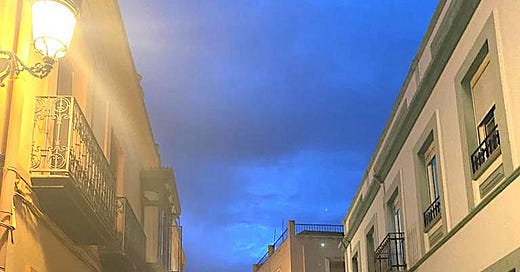



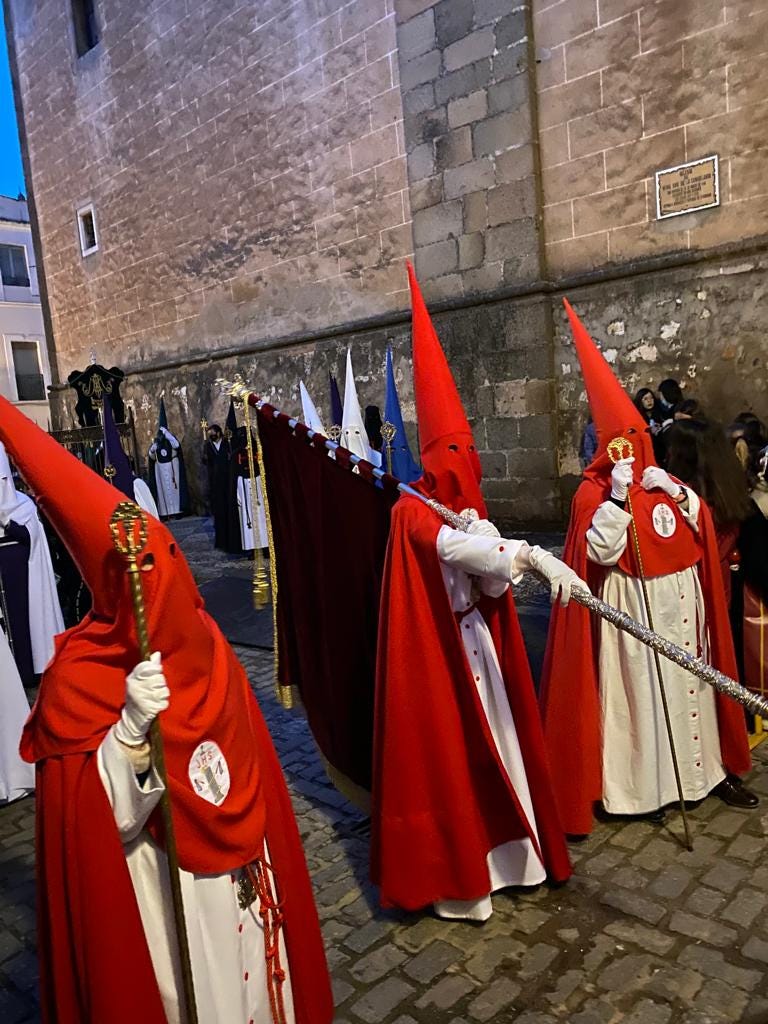
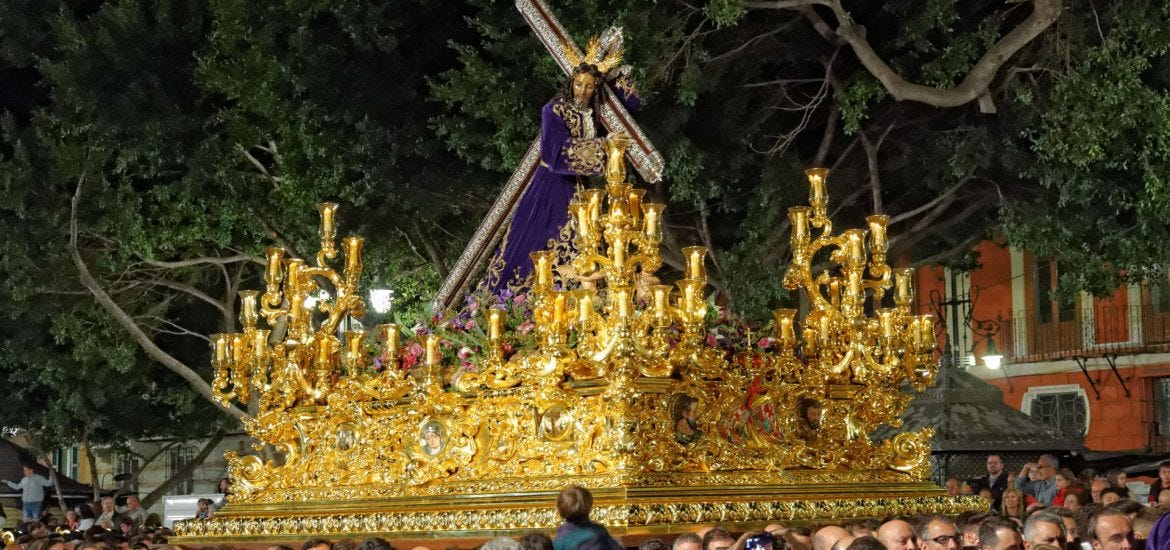
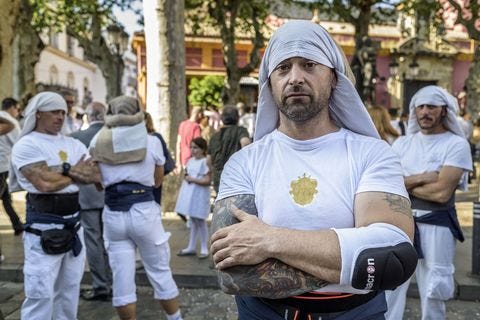
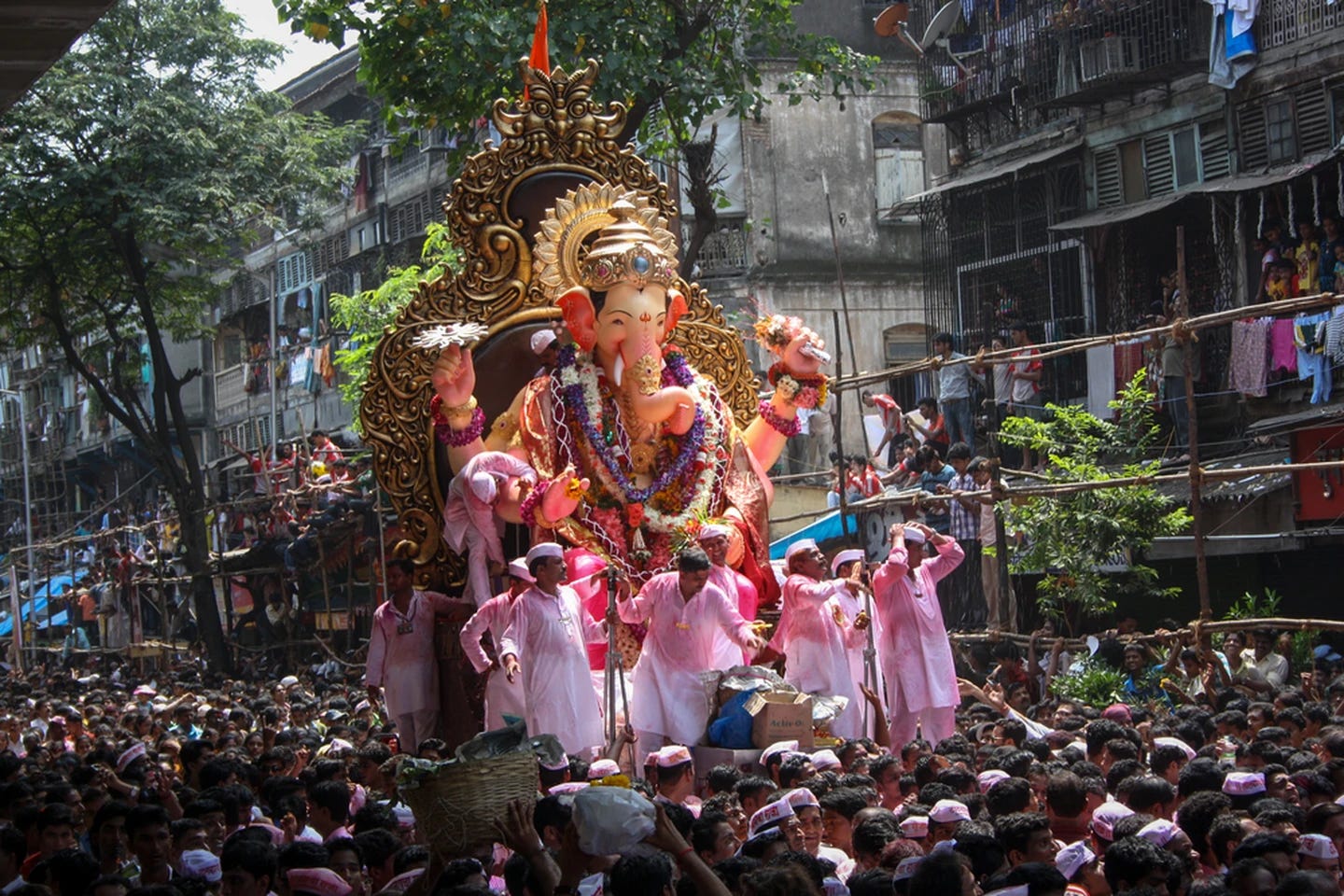
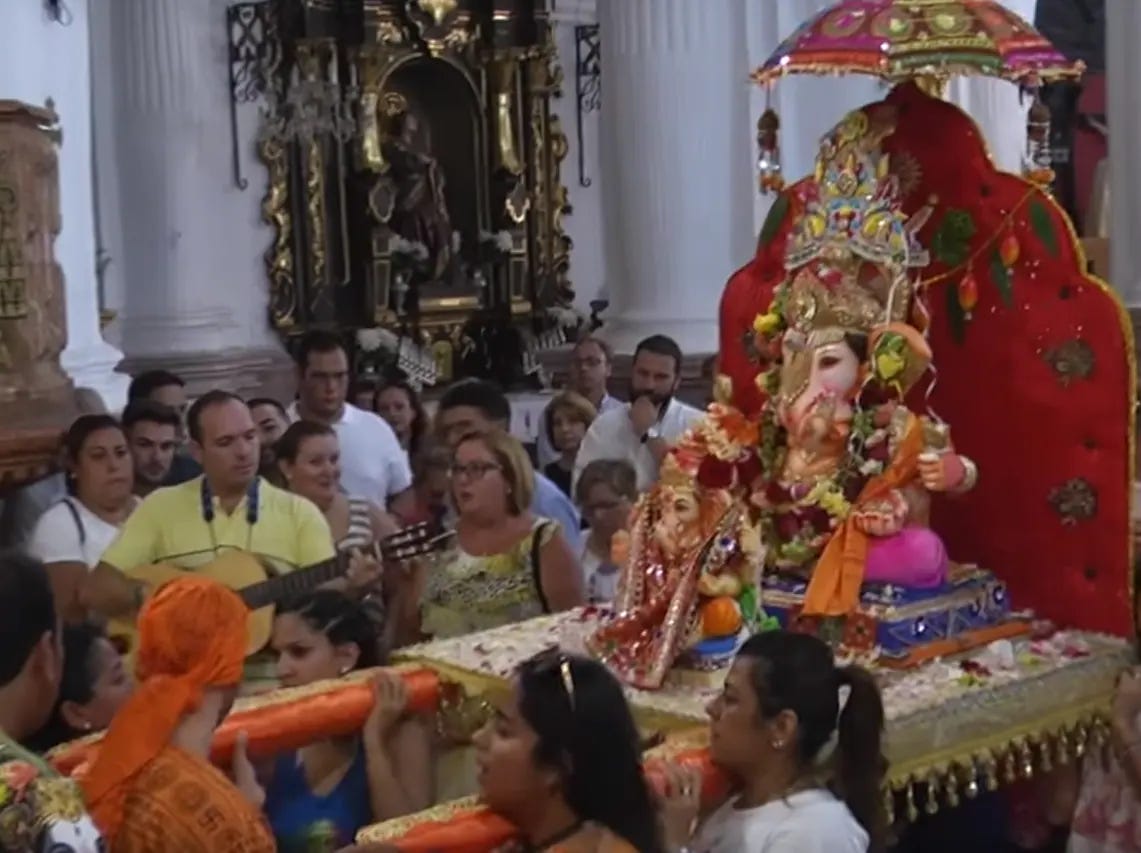
The Saeta has more folky (Rajasthani?) overtones I would say, rather than being reminiscent of a classical raag…